 by "ttyymmnn" (ttyymmnn)
by "ttyymmnn" (ttyymmnn)
Published 12/13/2017 at 12:35
 by "ttyymmnn" (ttyymmnn)
by "ttyymmnn" (ttyymmnn)
Published 12/13/2017 at 12:35
Tags: wingspan
; Planelopnik
STARS: 11
Throughout WWII, the US Army had control of both air and ground forces, but the unprecedented growth of the US Army Air Forces called for a new branch of the armed services, and the US Air Force was founded on September 18, 1947. With this split, it seemed fairly clear that the Air Force would take care of all air warfare, while the Army stayed firmly on the ground. But the split didn’t stop the Army from continuing to develop their own fixed-wing aircraft, as they felt that it was far better to control the tactical movement and support of troops on their own, rather than rely on the Air Force. This included not only troop and cargo aircraft, but also fighters to provide close air support and reconnaissance. What the Army really wanted was a fighter that could take off and land vertically, so it could operate near to the front. So they turned to Lockheed and Ryan to provide them with a vertical/short takeoff and landing (V/STOL) jet fighter that could serve as a ground support aircraft, and also provide battlefield reconnaissance.
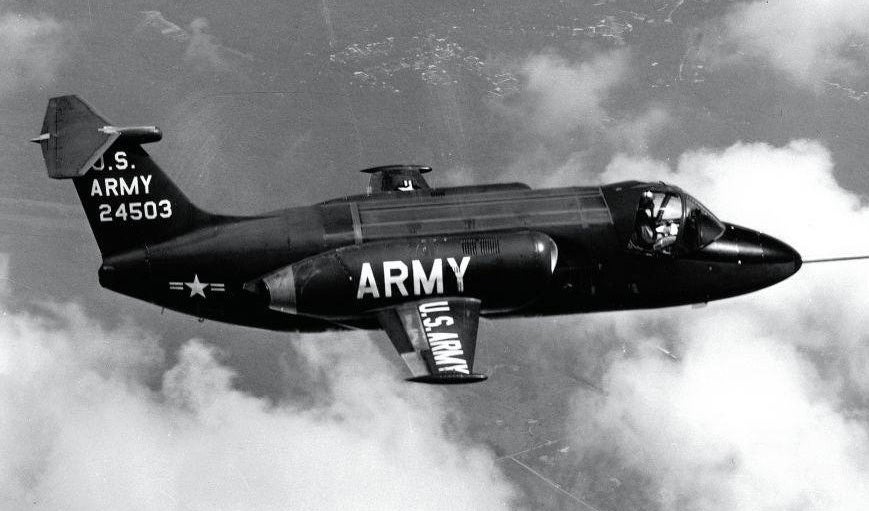
The first to be built was the Lockheed XV-4A Hummingbird, which was powered by two Pratt & Whitney JT12 turbojet engines mounted externally on either side of the fuselage. Each engine provided 3,300 pounds of thrust, which was directed downward and augmented with cold air sucked in through an opening in the top of the fuselage for vertical takeoff. Unfortunately, when the XV-4A was loaded with fuel, it achieved a thrust-to-weight ratio of only 1.04:1, barely enough to get the aircraft off the ground. The Hummingbird took its maiden flight with a conventional takeoff on July 7, 1972, followed by tethered vertical flight testing. The first transition from horizontal to vertical flight took place on November 8, 1963. But the XV-4A proved underpowered and difficult to fly, and the first prototype crashed on June 10, 1964, killing the test pilot. Something had to be done to provide more lifting power.
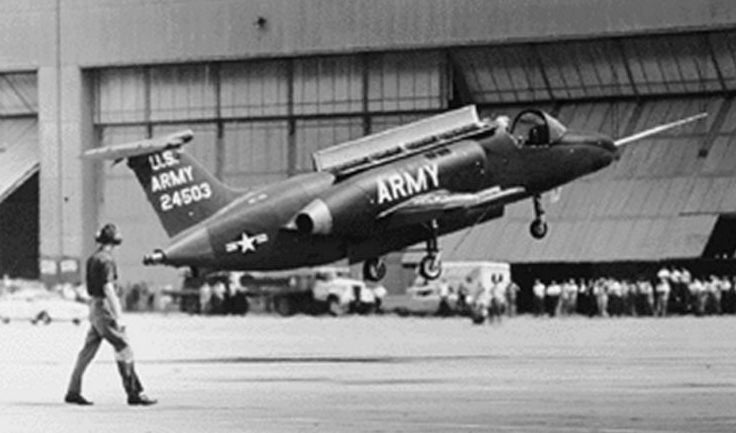
Lockheed followed the XV-4A with the XV-4B. Instead of two Pratt & Whitney turbojets using ducted thrust, the main engines were replaced with two General Electric J85 turbojets along with four J85s mounted vertically for a total of six engines. Improvements were made to the wings, landing gear, and other components, and the pilot now had a stability augmentation system for greater controllability. The XV-4B also employed a hybrid fly-by-wire control system with mechanical backup. The engines all had rudimentary thrust vectoring to assist with vertical takeoffs, with the vertically-mounted engines shut off in level flight. While more powerful and a bit easier to fly than its predecessor, the Hummingbird showed no great maneuverability as its avian name might suggest, and the XV-4B crashed on March 14, 1969, though its pilot ejected safely.
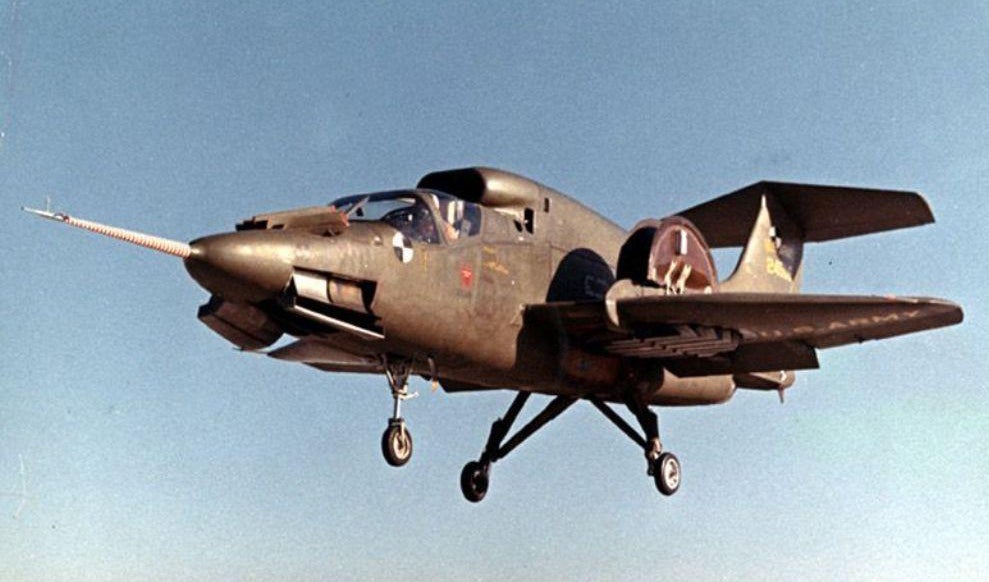
Ryan’s entry into the V/STOL competition was the XV-5 Vertifan, a name which went much farther in describing exactly what the aircraft was. Where Lockheed relied entirely on jet thrust for lift, the Vertifan was powered by two General Electric J85 engines housed in the bottom of the fuselage and fed by an air intake above and behind the pilot. Lift came from two General Electric X353-5 lift fans housed in the wings and a smaller one in the nose, with hinged covers that opened during vertical flight. The lift fans alone provided 16,000 pounds of thrust, more than the turbojet engines combined. Despite its greater lifting power, the Vertifan shared the same control problems as the Hummingbird, and the first prototype crashed while being flown during a public demonstration, killing the pilot. By this time, it was thought that the second XV-5 might be used to rescue downed pilots and whisk them away to a medical facility, but a hoist test resulted in the dummy pilot being ingested by a lift fan, resulting in a crash that fatally injured the pilot. The second prototype was rebuilt to the XV-5B standard and flight tests continued until 1971, when it was retired and placed on display at the United States Army Aviation Museum at Fort Rucker, Alabama.
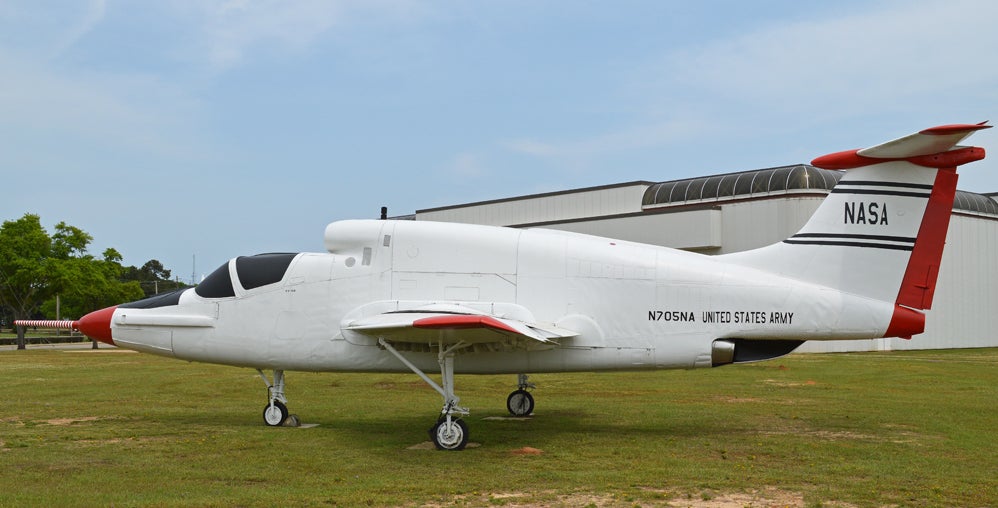
Though not directly related to the difficulties with the XV-4 and XV-5, the Army and Air Force finally came to a gentleman’s agreement in 1966 whereby the Air Force would take over the bulk of fixed-wing aviation while the Army would focus on rotary-wing aircraft. Though the Army is still prohibited from operating fixed-wing combat aircraft, they never left the airplane business entirely, and now operates various airplanes in the reconnaissance, signal intelligence (SIGINT), and transport roles such as the Beechcraft C-12 Huron , Cessna UC-35 ( Citation V ), and Short C-23 Sherpa .
!!! UNKNOWN CONTENT TYPE !!!
!!! UNKNOWN CONTENT TYPE !!!
!!! UNKNOWN CONTENT TYPE !!!
!!! UNKNOWN CONTENT TYPE !!!
!!! UNKNOWN CONTENT TYPE !!!
!!! UNKNOWN CONTENT TYPE !!!
!!! UNKNOWN CONTENT TYPE !!!
If you enjoyed this post, please join in the conversation and let me know. For more posts about aviation, aviation history and aircraft oddities, head over to
Wingspan
.
!!! UNKNOWN CONTENT TYPE !!!
 "Rock Bottom" (rockbottom81)
"Rock Bottom" (rockbottom81)
12/13/2017 at 14:12, STARS: 4
The old NASA test archive photo below was labeled “XV5A-1964". Found it in my desk drawer 7 or 8 years ago. Nobody seemed to remember much about the test program, so I just kind of forgot about it... until now! Nice read, as always!
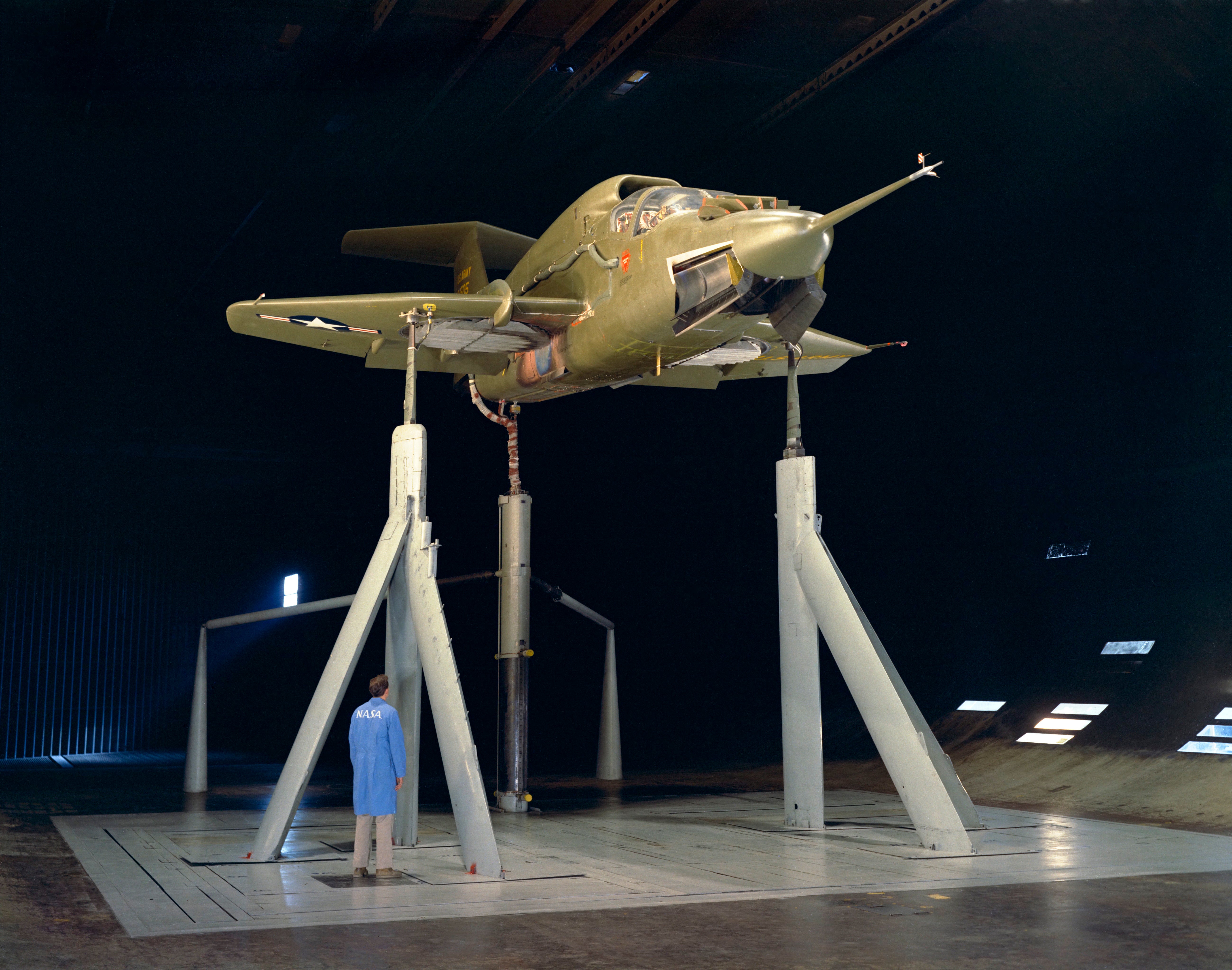
 "Chariotoflove" (chariotoflove)
"Chariotoflove" (chariotoflove)
12/13/2017 at 14:24, STARS: 0
The pull and tug between the different services over air assets has always interested and confused me. I know what the divisions are supposed to be, but operationally, they seem to blur so much.
 "ttyymmnn" (ttyymmnn)
"ttyymmnn" (ttyymmnn)
12/13/2017 at 15:48, STARS: 2
They do blur, and the Army was never a fan of having to depend on the Air Force. They weren’t a fan of making a separate service either, as their missions often crossed.
 "ttyymmnn" (ttyymmnn)
"ttyymmnn" (ttyymmnn)
12/13/2017 at 15:50, STARS: 1
Thanks! And that’s a fantastic photo. These articles grew out of a series called “Planes you’ve (probably) never heard of.” Maybe I should change that to “Planes you’ve (probably) never heard of (or forgotten about).” I find these aircraft also-rans much more interesting than the ones that had long and successful service lives.
 "Chariotoflove" (chariotoflove)
"Chariotoflove" (chariotoflove)
12/13/2017 at 16:48, STARS: 0
I often thought of the rivalry and overlap between the navy and Air Force. I never really gave much thought to the Army.
 "AfromanGTO" (afromangto)
"AfromanGTO" (afromangto)
12/13/2017 at 16:51, STARS: 0
Good read! That is a very interesting plane.
 "Rock Bottom" (rockbottom81)
"Rock Bottom" (rockbottom81)
12/13/2017 at 17:02, STARS: 0
Unfortunately, as the jet and VTOL pioneers die off, so do the memories of these incredibly interesting transitional 1940s-to-1960s machines, and that makes me a sad panda. Photos, videos, and engineering documents today are well preserved electronically and that probably means today’s planes will never be totally forgotten. These old ones, however, are mostly just stacks of pictures in forgotten desk drawers and old boxes marked “RECORD” that are occasionally tossed out by unknowing interns. People like you are truly doing us aero-nerd a service by exposing what little info remains!
A thought on the subject of sorta early VTOL: Are you familiar with the Lockheed helicopter programs of the 1950s and 1960s? Very fascinating machines that differed greatly in character and engineering approach from competing designs at Sikorsky and Bell. Specifically, I am an unashamed fanboi of the XH-51. By all accounts it was very easy to fly and (especially in later jet-compound form) super fast. It was a real shame they never landed a large government contract. Vertical flight would be very different today.
 "ttyymmnn" (ttyymmnn)
"ttyymmnn" (ttyymmnn)
12/13/2017 at 17:53, STARS: 1
Thanks! And thanks for reading.
 "ttyymmnn" (ttyymmnn)
"ttyymmnn" (ttyymmnn)
12/13/2017 at 17:54, STARS: 2
The Army and Air Force still have a fair bit of animosity between them. When the shit hits the fan, they’re all on the same side, but they always give each other shit.
 "Chariotoflove" (chariotoflove)
"Chariotoflove" (chariotoflove)
12/13/2017 at 18:04, STARS: 1
Well my dad was Air Force, or at least nominally, and that’s the uniform that was in the closet when I was little. So, that’s my favorite branch. Also, because planes.